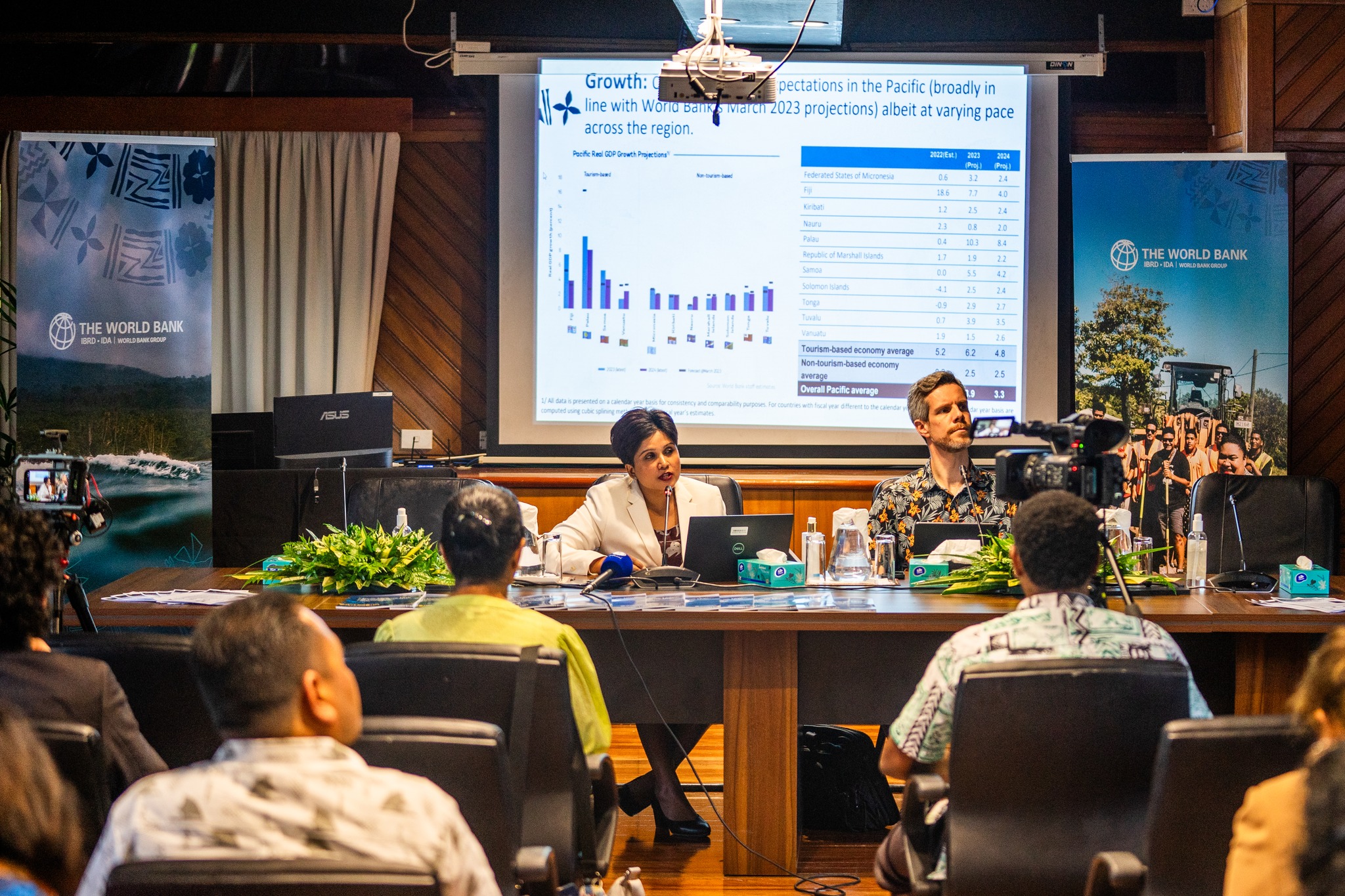By Rowena Acraman
The Pacific region is set to experience a significant growth rate of 3.9 percent in 2023, marking a remarkable recovery from the impact of the COVID-19 pandemic, according to the latest World Bank’s Pacific Economic Update.
Fiji’s economy has been a key driver of this positive trend, with an impressive 18.6 percent increase in GDP in 2022, following the reopening of its borders.
The report examines the economies of 11 Pacific Island nations and highlights the important role of labour migration in boosting the region’s economic well-being. Alongside natural resources and tourism, international labour mobility has become a vital source of income, thanks to the money and knowledge shared by migrant workers.
Stephen Ndegwa, the World Bank Country Director for Papua New Guinea and the Pacific Islands, is pleased with the Pacific economies’ recovery, but he acknowledges potential risks ahead.
“I am delighted to see the Pacific economies are recovering well as it entails the resilience of the economy, however, this also indicates that there are a lot of risks ahead.” He adds, “We need to seize the opportunity to enable better reforms to withstand the shock in the Pacific and global shocks we have no control over and evaluate the robustness of the economy and open up the sector to increase employment.”
Reshika Singh, the World Bank Country Economist for the Federated States of Micronesia (FSM) and Samoa, is concerned about inflation rates in neighbouring countries. She urges implementing strategies to prevent poverty levels from rising due to inflation.
Singh stresses, “We are particularly concerned with inflation rates in our neighbouring countries. Without mitigation methods, this could increase poverty levels. Poverty levels could raise as high as 11 percent depending on the rate of inflation.” She adds,
“Tourism-dependent countries took the biggest hit. Fiji has bounced back since its border reopening; however, Palau has been weaker due to a lack of flights. If Pacific Island countries follow mitigation methods, the scenario in the Pacific is expected to gradually improve.”
Thomas Walker, a Lead Economist at the World Bank, underlines the importance of migration in Pacific development. While acknowledging its benefits, Walker also points out the sacrifices and challenges that need addressing.
“Migration is central to development in the Pacific. Migrations have their upsides but there are a lot of sacrifices to get opportunities these schemes have issues that need to be addressed.”
“There are different factors that need to be considered such as policy recommendations, a need to invest in education, vocational training to be provided to avoid brain drain and invest in skills training so that more people in the Pacific have more opportunities at home.” Walker highlights.
Despite the positive growth, the Pacific still faces obstacles. The uncertain global economic recovery and rising inflation could slow down progress. Reduced spending in countries like Australia and New Zealand may affect tourism-dependent economies, including Fiji, Samoa, and Vanuatu.
Inflation is another concern, with the report projecting an average rate of 6.0 percent in 2023. Rising food and energy prices could put pressure on vulnerable populations and increase poverty.
To make the most of labour migration, governments are encouraged to invest in education and ensure equal opportunities. Working together to reduce the costs of international money transfers can also enhance the positive impact of labour mobility.
As the region embraces the opportunities presented by labour migration and forges ahead after COVID-19, working together and taking proactive measures will be pivotal in securing a brighter future for the economies of Pacific Island nations.
The event took place via Zoom and at the Pacific Islands Forum Secretariat office in Suva on 08 August and brought together stakeholders to discuss the report and its sustainable economic growth for the Pacific Island nations.
SOURCE: PACNEWS














